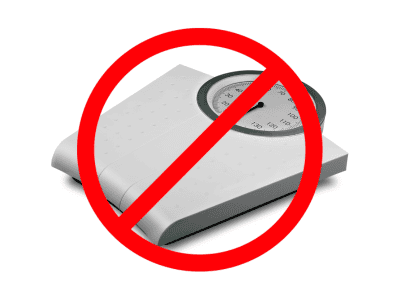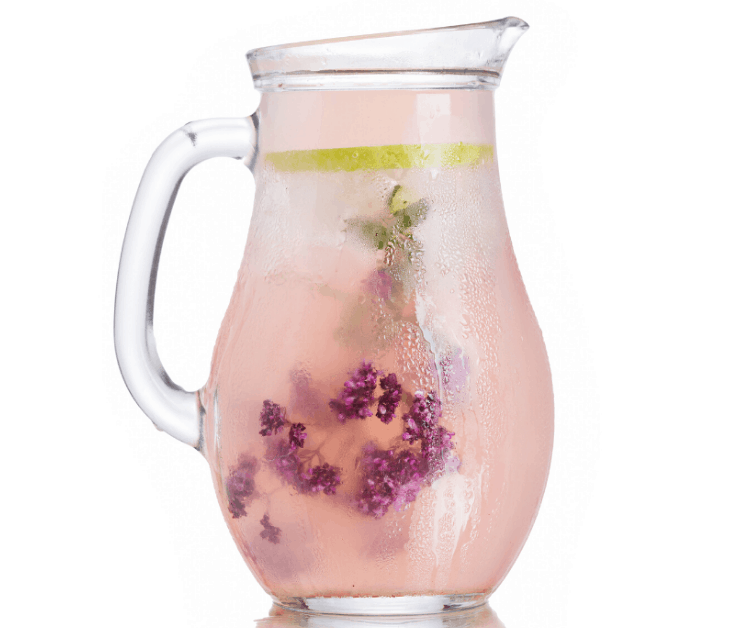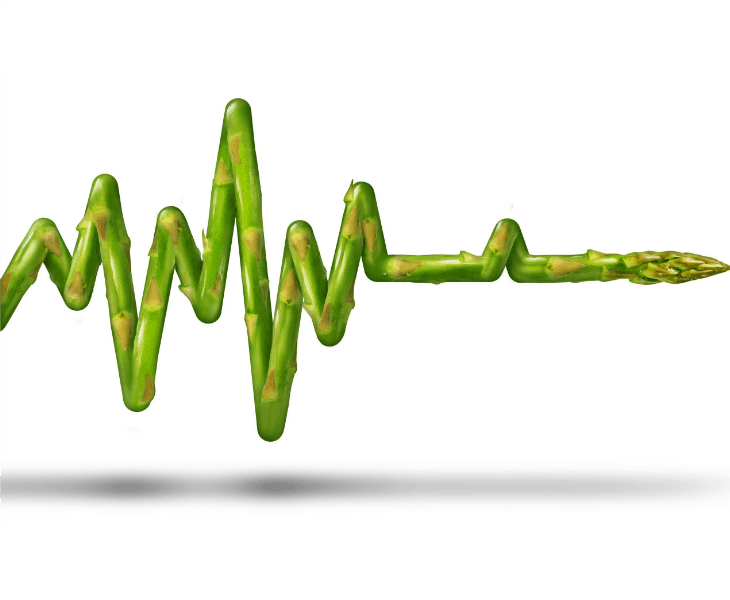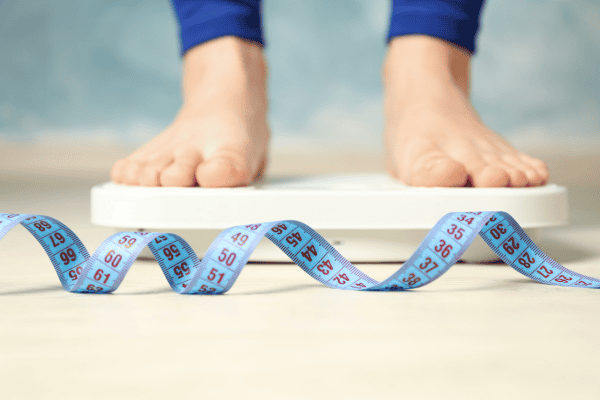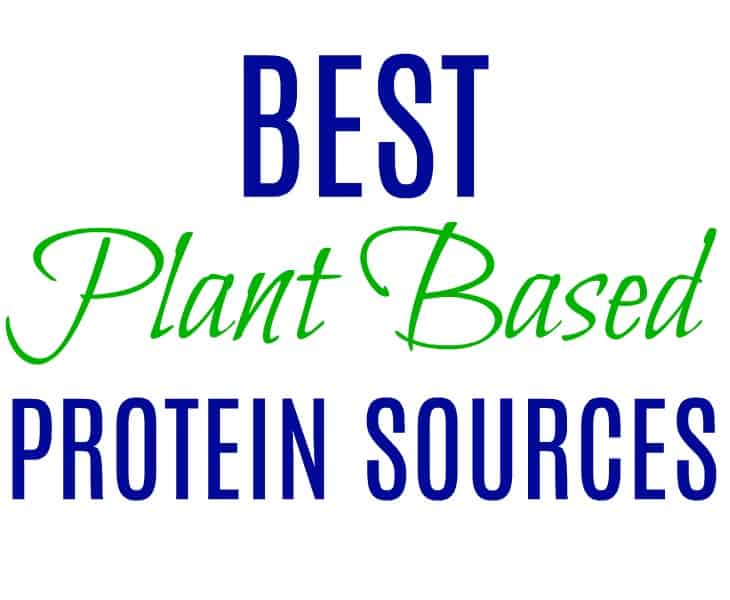The Vegan Food Pyramid For Weight Loss (+ Meal Plan)
You have probably heard of the food pyramid. The USDA updated the food pyramid to a new system called “myplate“. It is supposed to help control your portion size so you eat the right amount of food from each group.
What does the food pyramid look like for vegans?
Especially for vegans, a vegan food chart is helpful by providing an overview of all food groups and serving sizes to ensure you get all your nutrients. There are many food pyramid templates out there. The one below is from veganfoodpyramid.com.
Can you use this vegan food pyramid for weight loss?
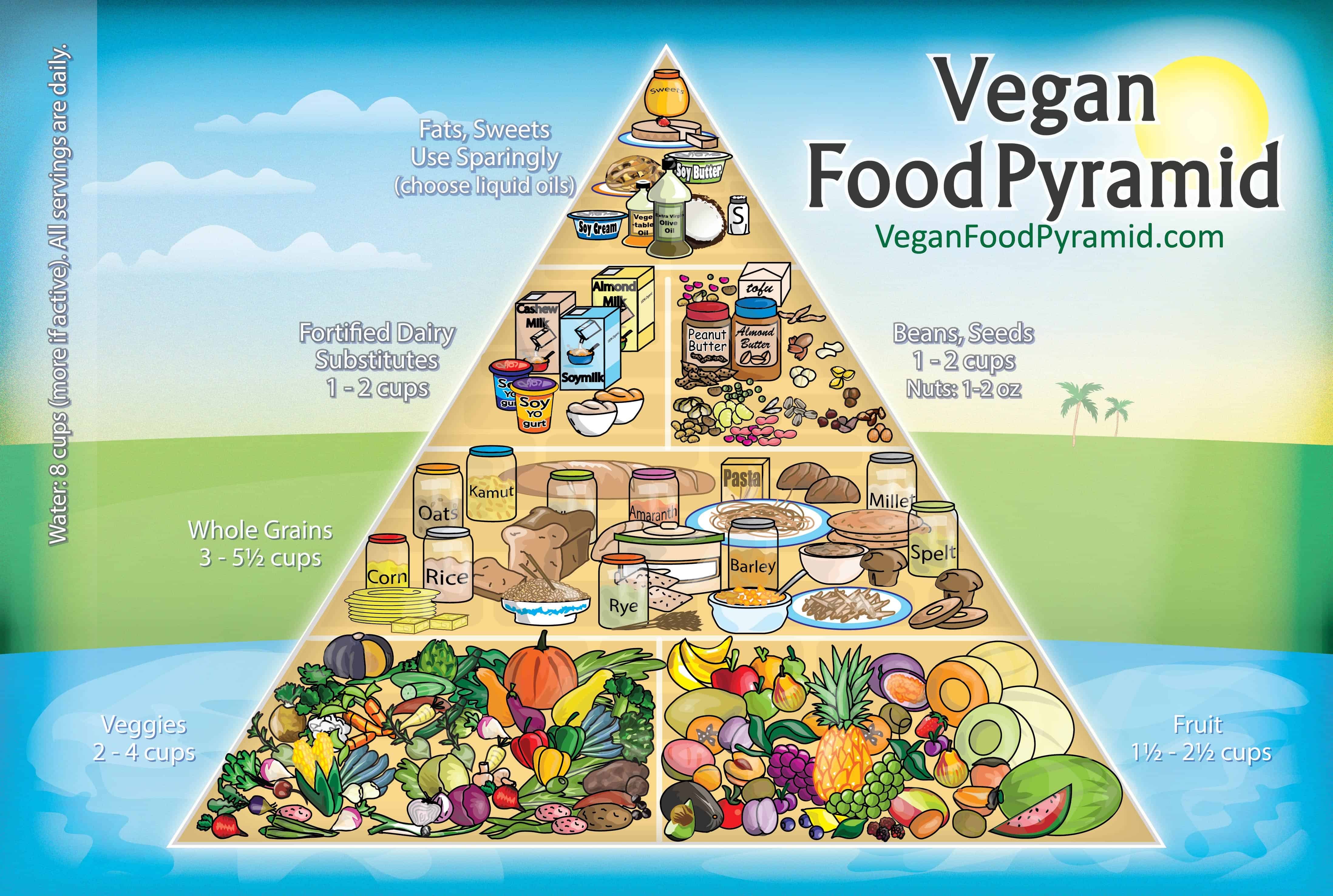
You can see in the image above that the biggest food group of the vegan pyramid is fruit and veggies followed by whole grains.
It is a good start to mostly eat fruits and veggies, but there are some things you’ll need to change when using this vegan food pyramid for weight loss. First and foremost you must make sure to get all your nutrients, no matter what diet you are on.
You should never run deficient in nutrients for the sake of weight loss. You can track your intake with cronometer to be on the safe side.
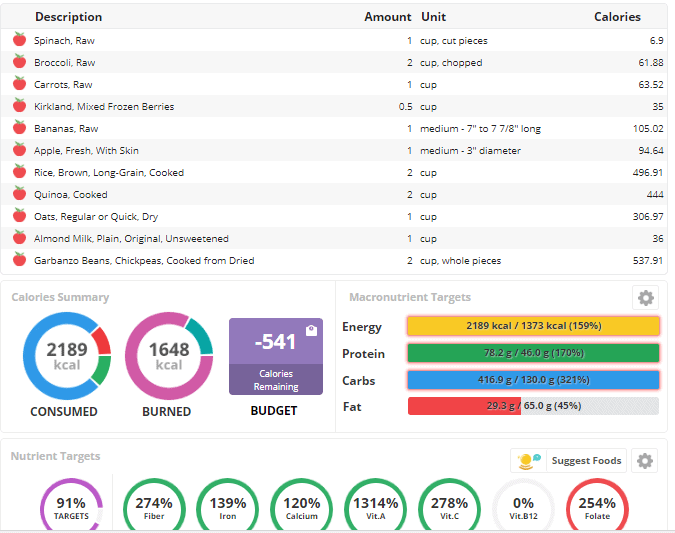
Cronometer can show you how many calories you are consuming and then gives you a breakdown of your consumed micro and macro nutrients.
To review this vegan food pyramid I put the highest suggested amount of each food group into the Cronometer tool, but left out the top (fats and sweets). This brings me to over 2000 calories per day, 78 g protein, and most of the minerals and vitamins are covered.
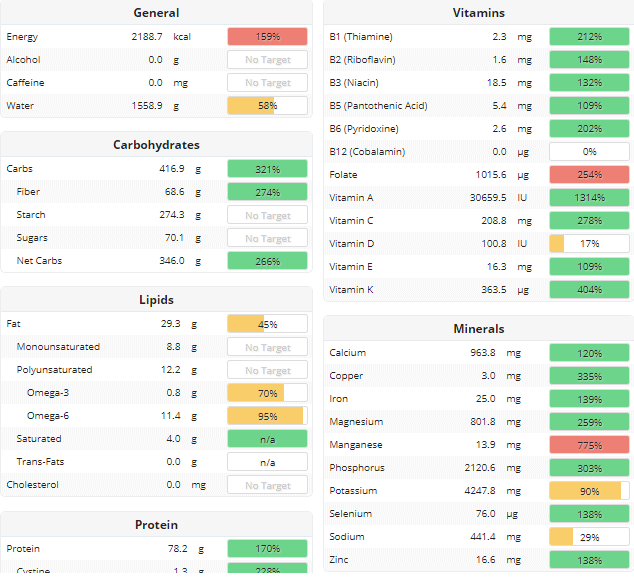
This should be sufficient when you eat according to the food pyramid and don’t want to lose weight. The only thing you have to watch is the omega 3 to 6 ratio and the potassium. Sodium will be higher, once you add it to your recipes.
So how do we use this information for weight loss?
You really can lose weight on any diet if you eat less calories than you burn. But some diets, for example low carb diets like the keto diet, will not improve your health long term and shouldn’t be followed for an extended period of time.
It is better to create healthy habits that are easily achievable and sustainable for the rest of your life so that you can lose weight naturally and keep it off naturally as well.
How many calories should I eat per day to lose weight?
Generally, if you eat 500 calories per day less than you burn you will lose about 1 pound per week. You can reach a caloric deficit by eating less or by exercising more.
How to calculate your caloric needs for weight loss
Wear a fitness tracker to check how many calories you burn per day. Then you can subtract 300 to 500 calories from this number to get your weigh loss calorie intake. For a free option, use the body weight planner to calculate your caloric needs based on your weight loss goals.
If you don’t want to use either, you can simply start by eating 2000 calories per day and evaluate by the end of the week: If you lose 1-2 pounds per week you can keep going with a 2000 calorie diet.
If you did not lose anything you should decrease your caloric intake (by 200 – 300 calories) or add more walks/exercises to your routine.
I would not suggest going lower than 1700 calories, simply because you need to make sure you’re getting all your nutrients. Again, your main goal should be to develop a healthy lifestyle and as a side effect lose weight.
It is a long term goal and much more effective than fad diets. Therefore, I would suggest creating a calorie deficit by exercising daily or at least increasing daily activities like adding walks to your routine.
If you stick to a whole food plant based diet, you get more nutrients per calorie, and therefore can eat a larger volume of food.
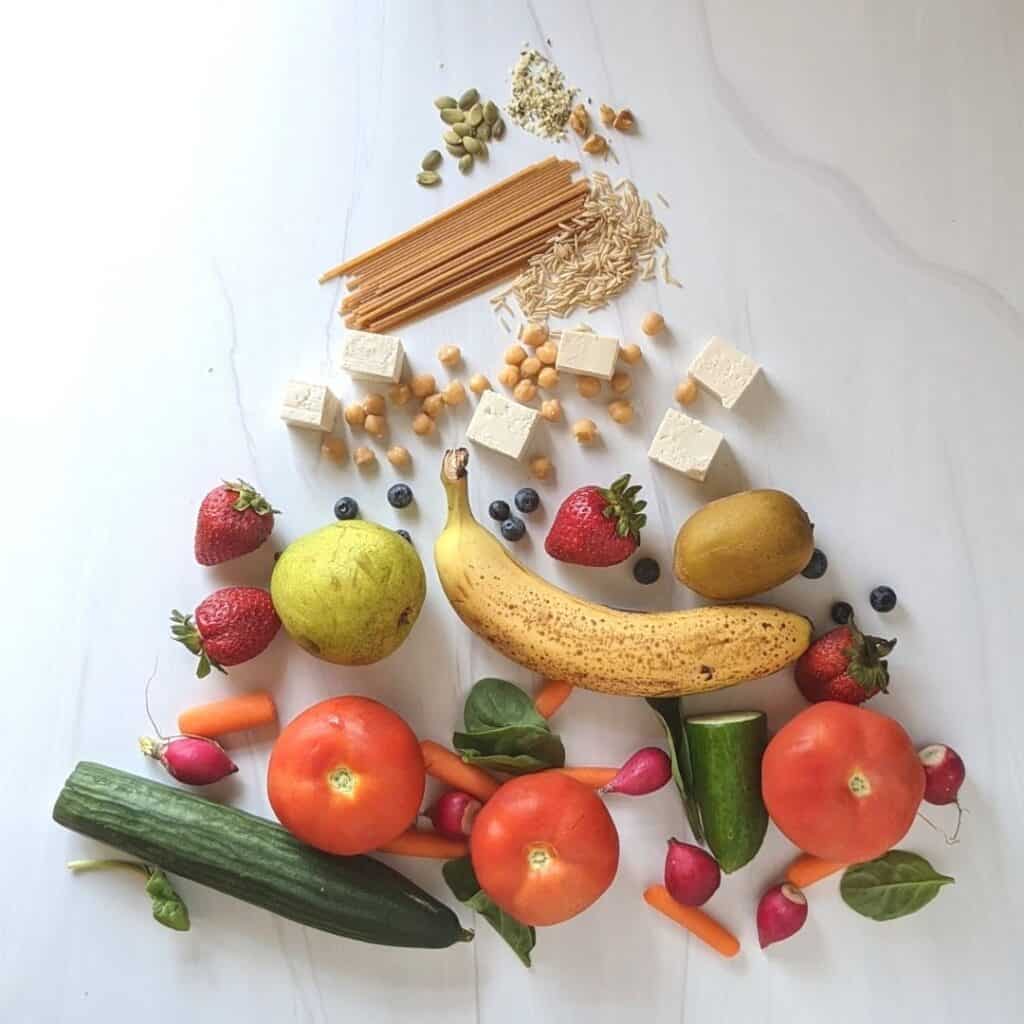
Vegan Food Pyramid For Weight Loss
To create a vegan food pyramid for weight loss simply increase vegetable, fruit, and plant based protein intake and decrease grains.
Focus on whole foods as the fat source and leave out sugar (compared to the normal vegan food pyramid). This will ensure you have a calorie deficit but still get good nutrition (vitamins, mineral, protein).
Here is how this will look when put in the cronometer tool:
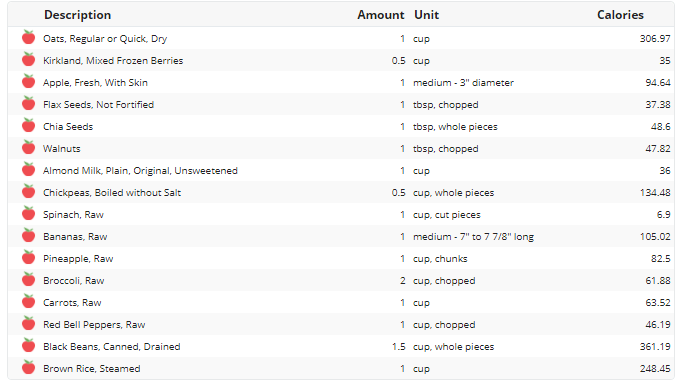
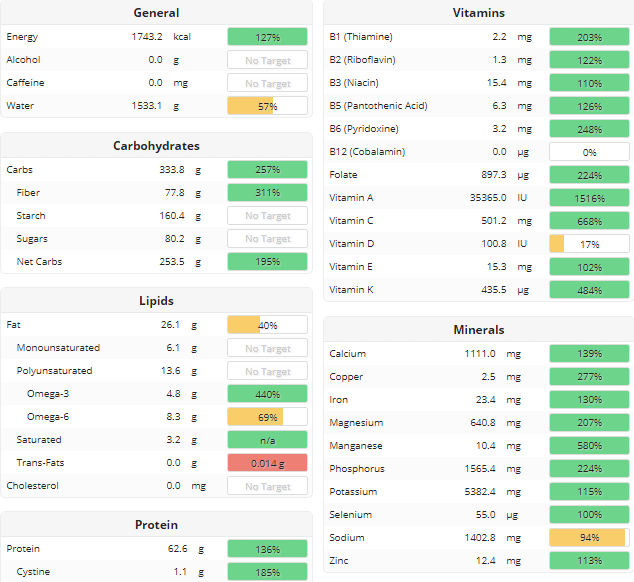
In summary, your caloric intake is about 1700 to 1800 per day and this includes 62g of protein (which is sufficient). You will also see that all your nutritional needs are met, and the omega 3 to 6 ratio is outstanding.
Here is exactly what to eat from the vegan weight loss pyramid
- 5 cups vegetables: Including at least 1 cup leafy greens and 1/2 cup cruciferous veggies (broccoli, cauliflower,…)
- 3 1/2 cups fruits: That includes at least 1/2 cup berries
- 2 cups legumes: This includes all beans, lentils, chickpeas, and hummus
- 2 cups cooked grains that include at least 3/4 cup potatoes: Make sure they are whole grains (nothing processed) like rice, oats, quinoa. The occasional whole wheat pasta should be fine (no bread).
- 1.5 oz (or 3 T) nuts and seeds: Including 1 T flax seed
- 1.5 cups non dairy milk: Like almond or soy milk. Make sure it is unsweetened and you can use it with your oats or in smoothies.
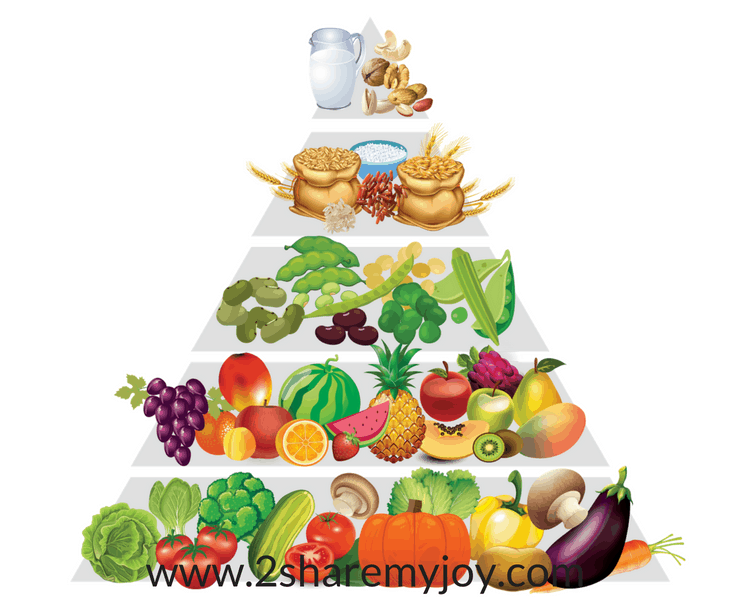
The suggestion to include leafy greens, cruciferous veggies, berries, and flaxseed comes from the plant based doctor, Dr. Michael Greger, and can be found in his popular book “How not to die”. These recommendations are backed up by research and you can get the book in your local library or on Amazon.
If you are serious about learning more on healthy weight loss, I suggest reading Dr. Gregers book “How not to DIET”. In it you will find scientific answers to all weight loss question you might have.
Vegan Food Pyramid For Weight Loss – Meal Plan Example
Now you know how much to eat from each food group and you can start creating your diet plan. Meal planning plays a big role in your weight loss success. Once your meal plan is set and you buy all your groceries it is much easier to stick to the plan. And, you are less likely to go grab fast food.
Breakfast: Oat Bowl
- 1 cup cooked oats
- 1/2 cup berries
- 1 banana or apple diced
- 1 T flax seed
- 1 T chia seeds
- 1 T walnuts
- 1 cup almond milk
Snack: Smoothie
- 1/2 cup chickpeas
- 1 cup spinach
- 1 cup pineapple
- 1 banana
- 1/2 cup almond or soy milk
Lunch/Dinner
- 2 cups steamed veggies
- 1/2 cup cooked grains
- 3/4 cup beans
Note: Prepare double the amount of the dinner for lunch the next day. This saves time, money, and energy.
You can add a variety of seasoning and herbs to your meal and make one pots, stews, chilis, salads, and so on. Some examples include a quinoa salad with chickpeas and veggies (cucumber, tomatoes) or a bean chili with beans, tomatoes, bell pepper, and rice (plus the seasoning).
Below is an example of how your dinner and lunch plate should look like (portion sizes).
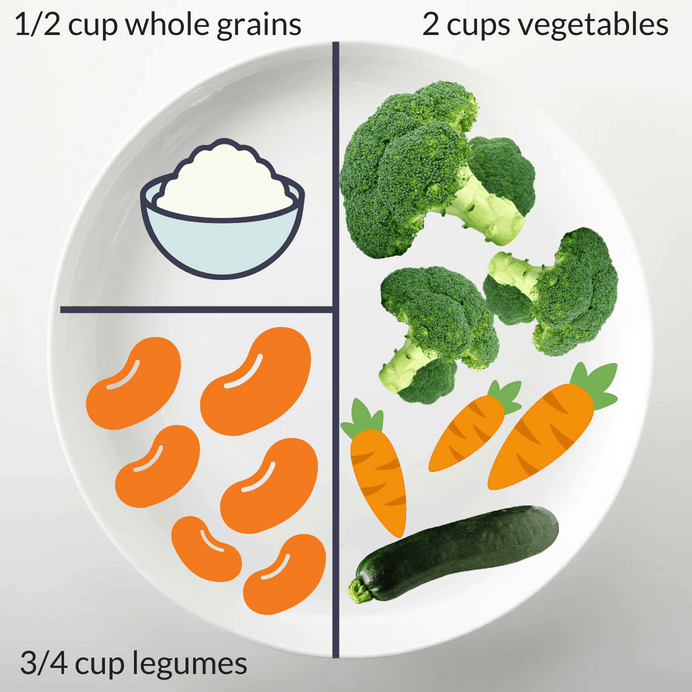
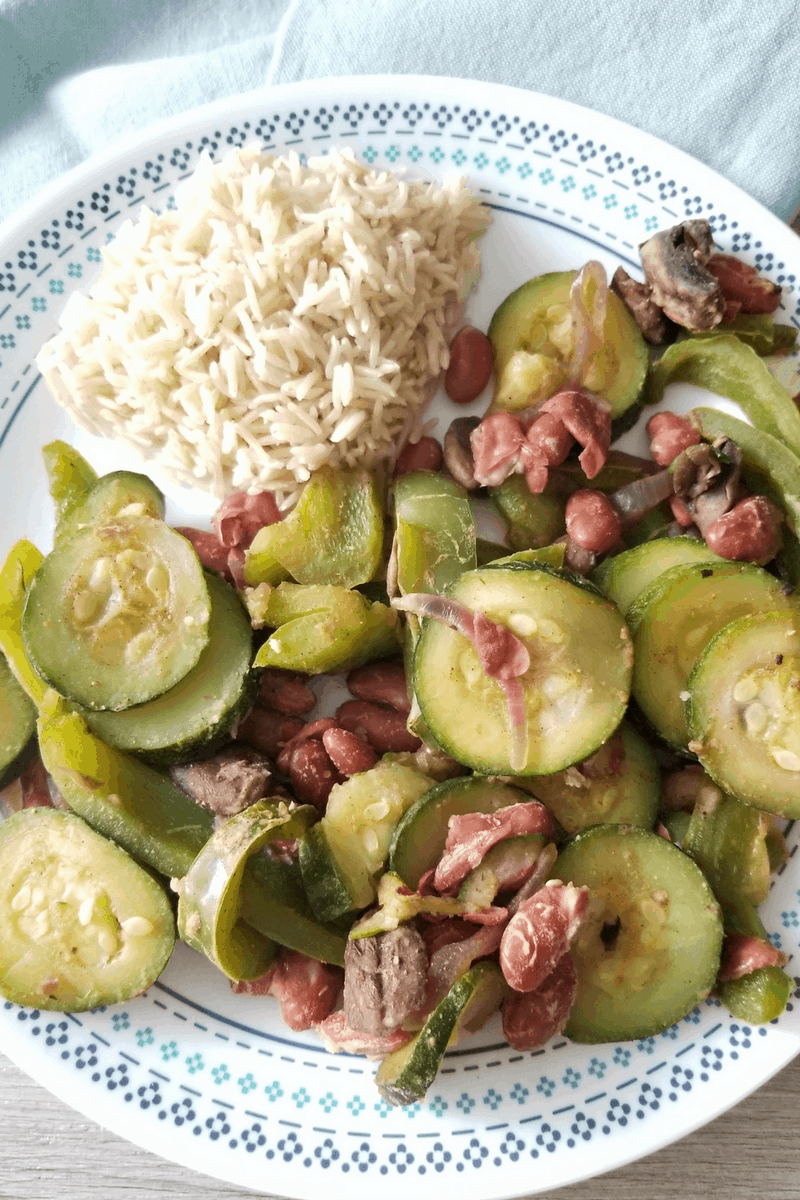
In the picture below I mixed the veggies with the beans, therefore the mix covers 3/4th of the plate.
NOTE: The food pyramid and the portion suggestions help ensure a sufficient nutrition and was designed to help you plan a balanced vegan diet. There are other food pyramid schemes or weight loss meal plans (for a vegan diet) that work as well.
It is important to know that you should stay as close to a whole food plant based diet as possible and track your nutrition intake with cronometer. You can still enjoy recipes that include small amount of oils, or don’t follow the ratio suggested on occasion.
Other food items
Potatoes
Potatoes and other starchy foods belong to the grain group in some weight loss programs. However, you can substitute the 1/2 cup of rice with about 3/4 cup potatoes on your plate as the grain part.
Avocados
Avocados are a fruit, but are very high in fat. Since it is a whole food it is healthy, but on a weight loss diet it can add calories quickly. Occasionally you can substitute 1/4 cup grains or 1/4 cup veggies with 1/4 of an avocado.
Oils
There are 2 reasons not to cook with oil. Oil is not a whole food which means it is processed and lacks the fiber. It is highly concentrated and therefore a small amount adds lots of calories that are simply not necessary. I know many say oil is healthy, but consuming a whole food is always best.
The second reason not to cook with oil is that many oils are high in omega 6 fatty acids, which is bad when your omega 3 to 6 ratio is thrown off. An optimal ratio of omega 3:6 is 1:4. Many processed foods contain cheap oils that increase omega 6, and if we don’t eat enough omega 3 (nuts and seeds) it could cause inflammation in the body.
Sugar
The sugar that is in fruits is very different than refined or added sugar. It is best to avoid prepackaged foods like dressings, bread, treats, and more. They usually contain other unhealthy ingredients besides sugar. While the daily sugar limit of added sugar is up to 25g, I suggest staying away from it completely as much as possible, especially during weight loss.
Now, there is no reason to avoid natural sugar that is in fruits or complex carbs (that turn into sugar) like brown rice. These foods contain fiber that surrounds the sugar and therefore eating these won’t cause as much of an insulin spike compared to added sugar. Insulin spikes can mess with your hormones and can cause other health issues. Also note that hamburger meat causes a higher insulin spike than white pasta.
Exercise
There are many health benefits of exercising regularly and a few are: improved mental health, reduced stress, better sleep, cancer prevention and lower blood pressure, boosted immunity function and prolonged life. A study found that walking 150 minutes per week lowers mortality risk by 7% and walking 300 minutes a week drops mortality by 14% (source).
You can also workout moderately instead (cardio, dancing, swimming,…), but if you are a beginner it is a great idea to start walking daily. As I have mentioned above you want to create a healthy lifestyle, so getting into a routine of daily walking/exercising will not only help you lose weight but will also become a habit with lifelong benefits.

